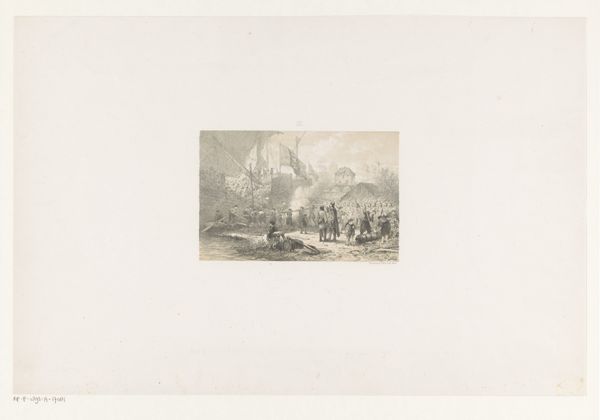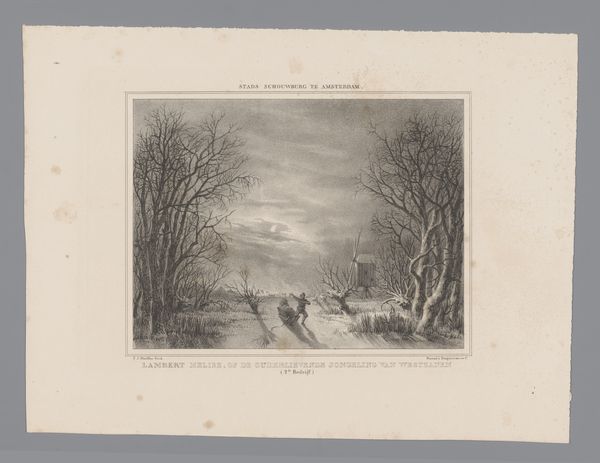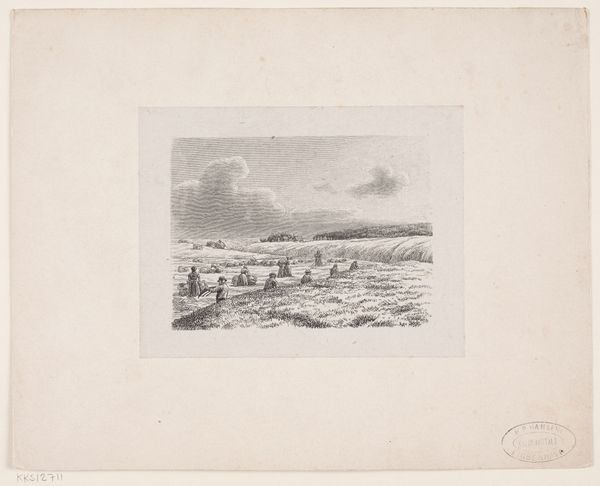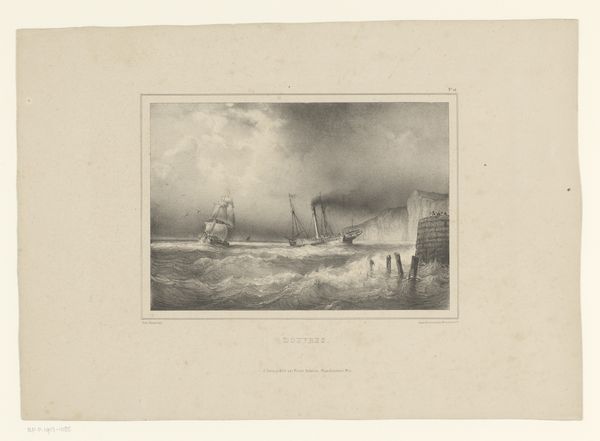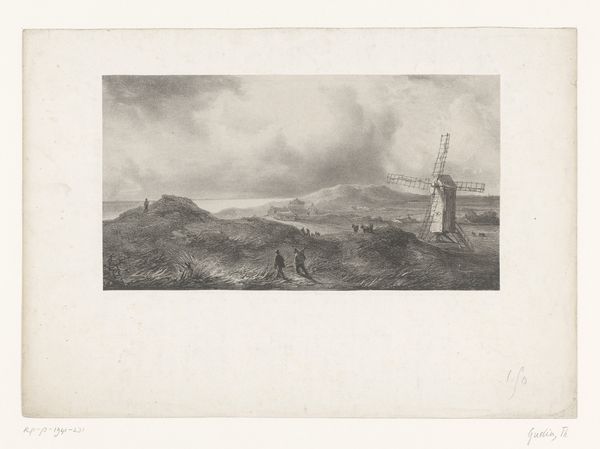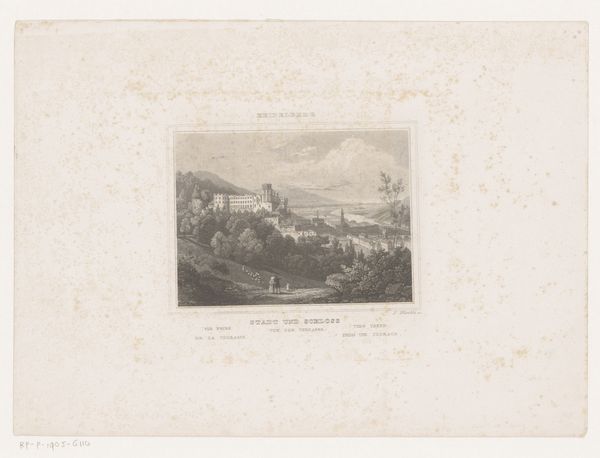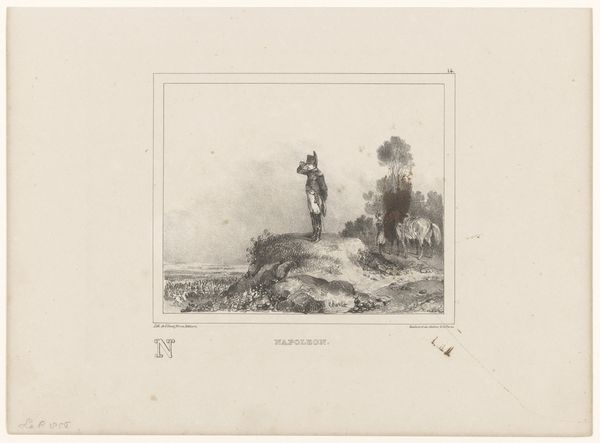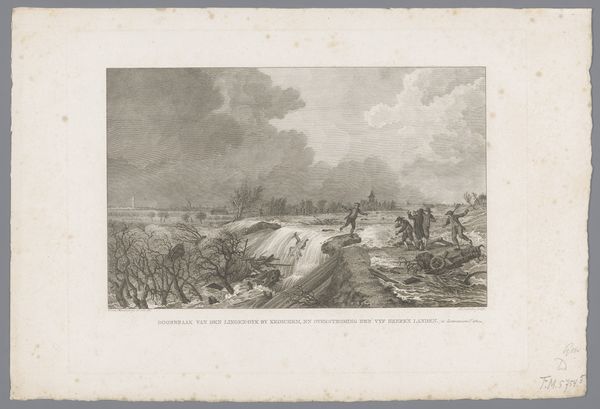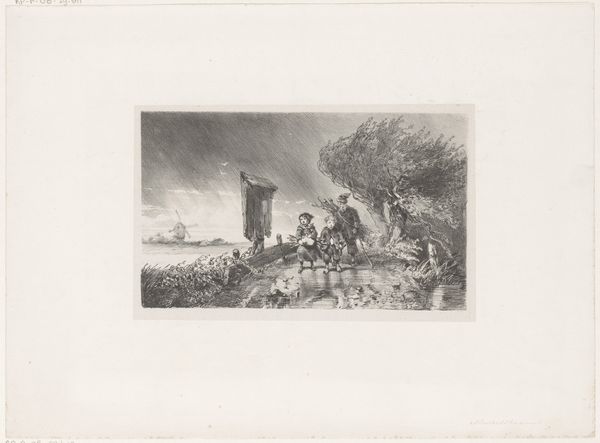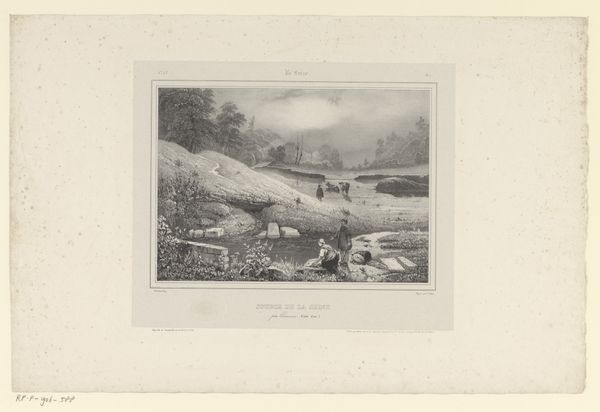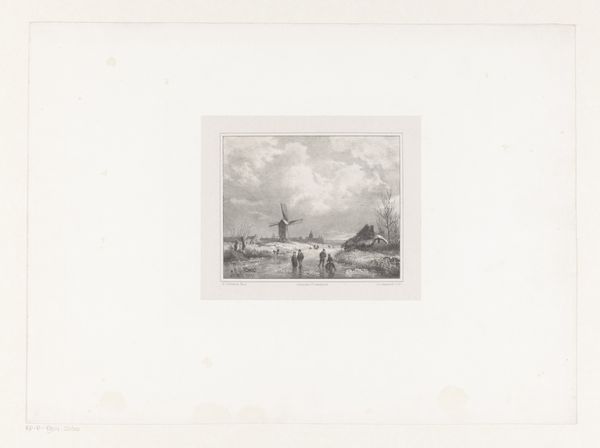
print, engraving
#
16_19th-century
# print
#
landscape
#
cityscape
#
genre-painting
#
engraving
#
realism
Dimensions: height 335 mm, width 450 mm
Copyright: Rijks Museum: Open Domain
Curator: Let’s turn our attention to this engaging print entitled "Winterlandschap met schaatsers op een rivier," which translates to "Winter Landscape with Skaters on a River." It comes to us from the Gebroeders van Lier, dating from around 1837 to 1843. What strikes you initially? Editor: It has a sense of almost dreamlike detachment. The grayscale rendering seems to freeze the scene, trapping those figures on the ice in a past that continues to haunt the present. Curator: Interesting take! I'm immediately drawn to the composition. Note how the artists employ a structured framework. The placement of the windmill to the left is meticulously balanced by the small group of skaters to the right, thereby creating equilibrium and visual interest. It makes you want to further explore the use of form here. Editor: Indeed, but I see that balance disrupted—power on the periphery, life struggling on the margins. The windmill, typically symbolic of industry and progress, stands guard over a populace reduced to a single, frozen plane. What kind of societal pressures might they have felt? Curator: That reading assumes intentional social critique, whereas the scene may be more straightforward—simply representing a winter recreation scene. Consider the use of light: How it sculpts the landscape, playing across the snow and emphasizing depth. The print exemplifies Realist traditions! Editor: But who could afford leisure time like skating in that era? Was this print perhaps created to depict only a certain class? Consider too the absent faces of the figures and their muted affect. In essence, this image, under its quaint exterior, could speak to social disparities during the rise of industrial capitalism in the Netherlands. Curator: Perhaps we are looking for too much intention, here, reading our modern preoccupations into a moment. For me, it remains compelling first because of its pure artistic execution. But I can appreciate how our understanding of the societal complexities that form any piece, also form our reaction to it, too. Editor: I agree. By positioning artworks like this one amidst contemporary debates, we help unfreeze these past moments and challenge a unified conception of what it meant to live, work, and dream in the 19th century.
Comments
No comments
Be the first to comment and join the conversation on the ultimate creative platform.

